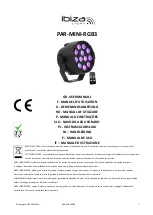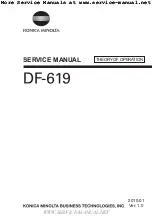
Safety
9
Carrying out mechanical and hydraulic tasks
The following knowledge and experience are required for the qualified
personnel:
trained for the task
aware that improper maintenance and repairs can cause accidents
knows the recognized safety rules and applies them
able to release and fasten screw connections with the permitted torque
able to assess hazards and environmental impact caused by hydraulic oil
able to assess hazards which arise from noise and heat
able to identify leaks
able to carry out work with hot or pressurized media in a professional
manner
able to replace hydraulic components such as hydraulic hoses, seals,
valves, etc.
Ban of unauthorized conversions
Unauthorized conversions or changes on the unit may lead to serious or even
lethal injuries. This applies in particular to changing and altering safety
devices.
Never bypass or shunt any safety devices.
Personal protective equipment
Risk of crushing feet when lifting and carrying the unit! Wear safety shoes
with steel toes.
Risk of slipping and therefore bone fractures during hydraulic work! Wear
safety shoes with non-slip soles.
Risk of skin irritation from contact with hydraulic oil and hydraulic
components! Always wear oil-resistant nitrile gloves.
Risk of burns from contact with hot media and components! Wear protective
gloves against thermal hazards.
Risk of skin cuts and grazes on sharp-edged components! Wear protective
gloves against mechanical hazards.
Risk of eye injuries when checking for leaks on open oil tanks and when
changing the hydraulic oil! Wear chemical-resistant protective goggles.
Risk of ear damage when the unit is running! Wear ear protection while the
unit is running.
Risk of poisoning in poorly ventilated rooms! The unit may overheat. This
may lead to the formation of oil mist and oil vapor. Wear respiratory
protection in this case.










































